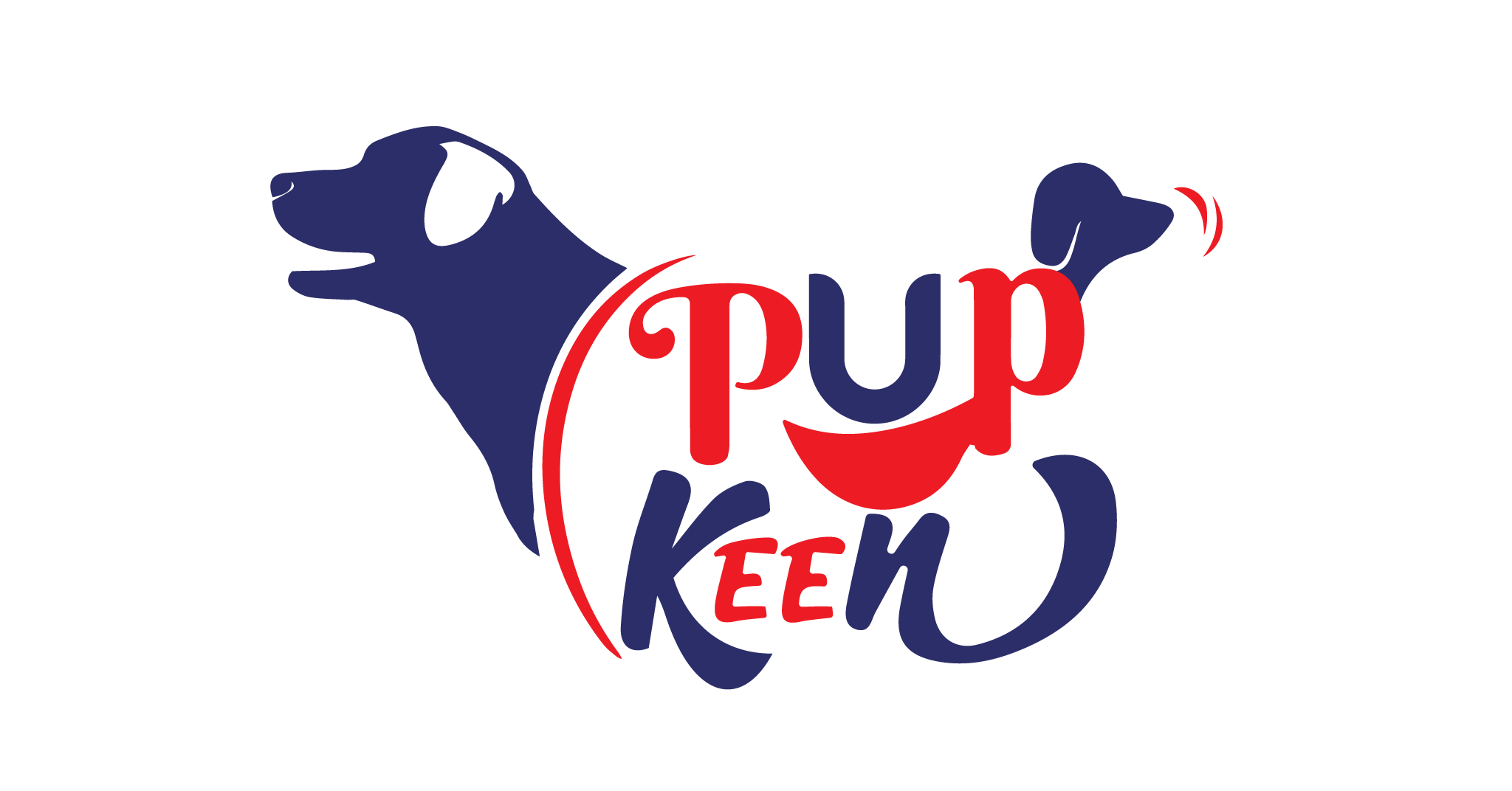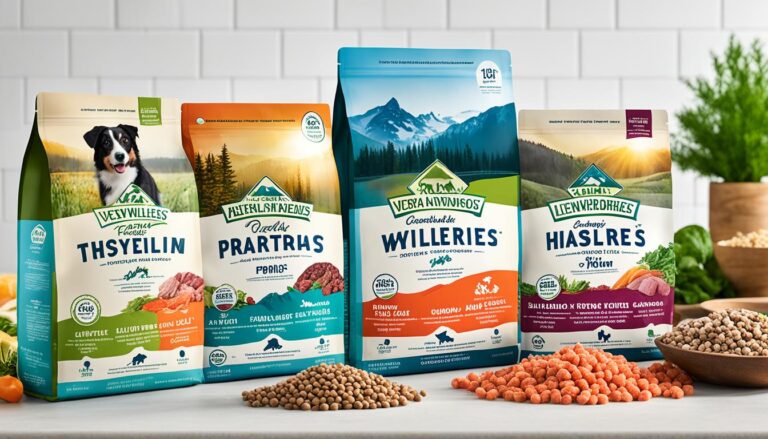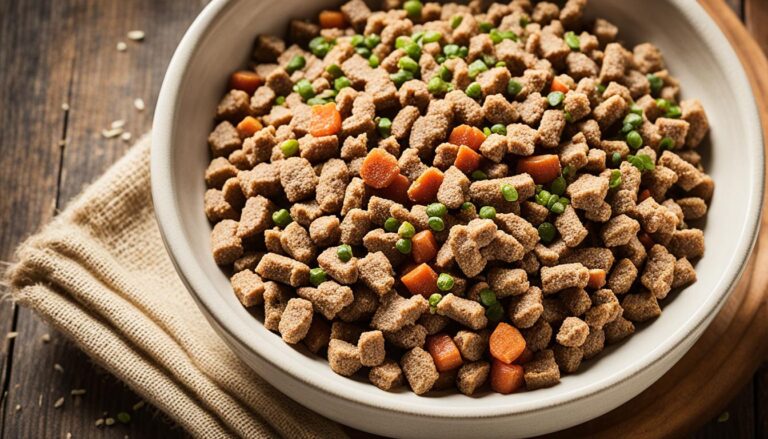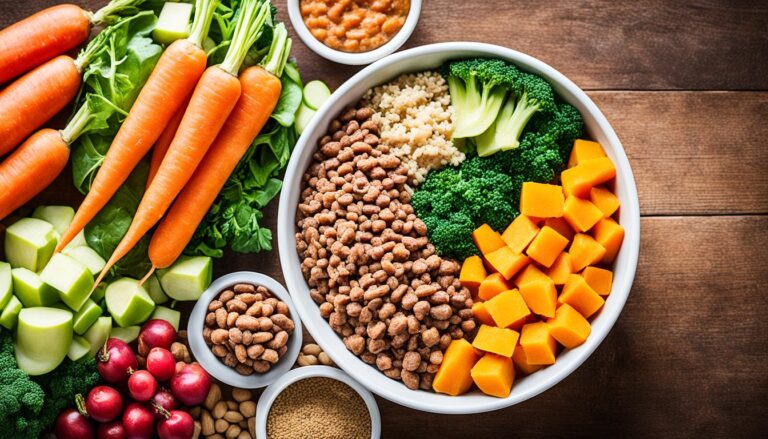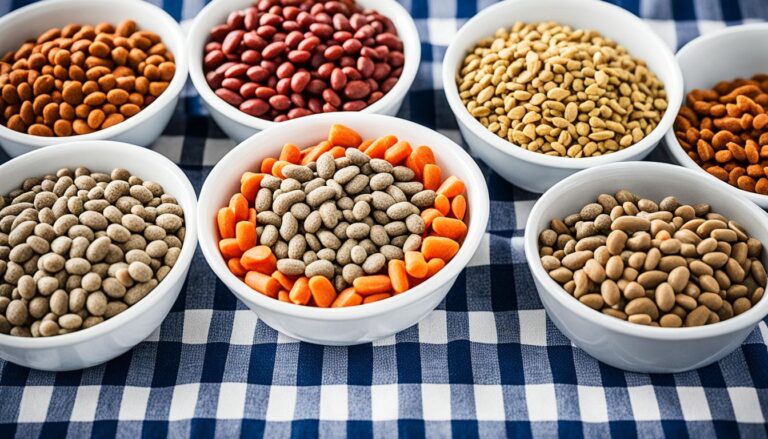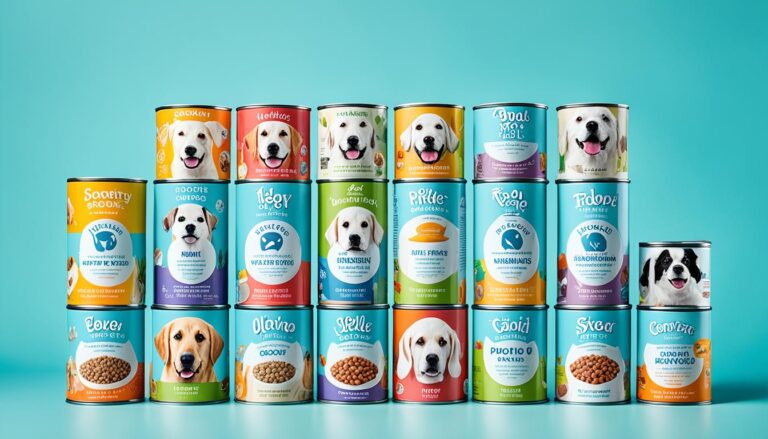Grain-Free Diets for Dogs with Celiac Disease: What You Need to Know
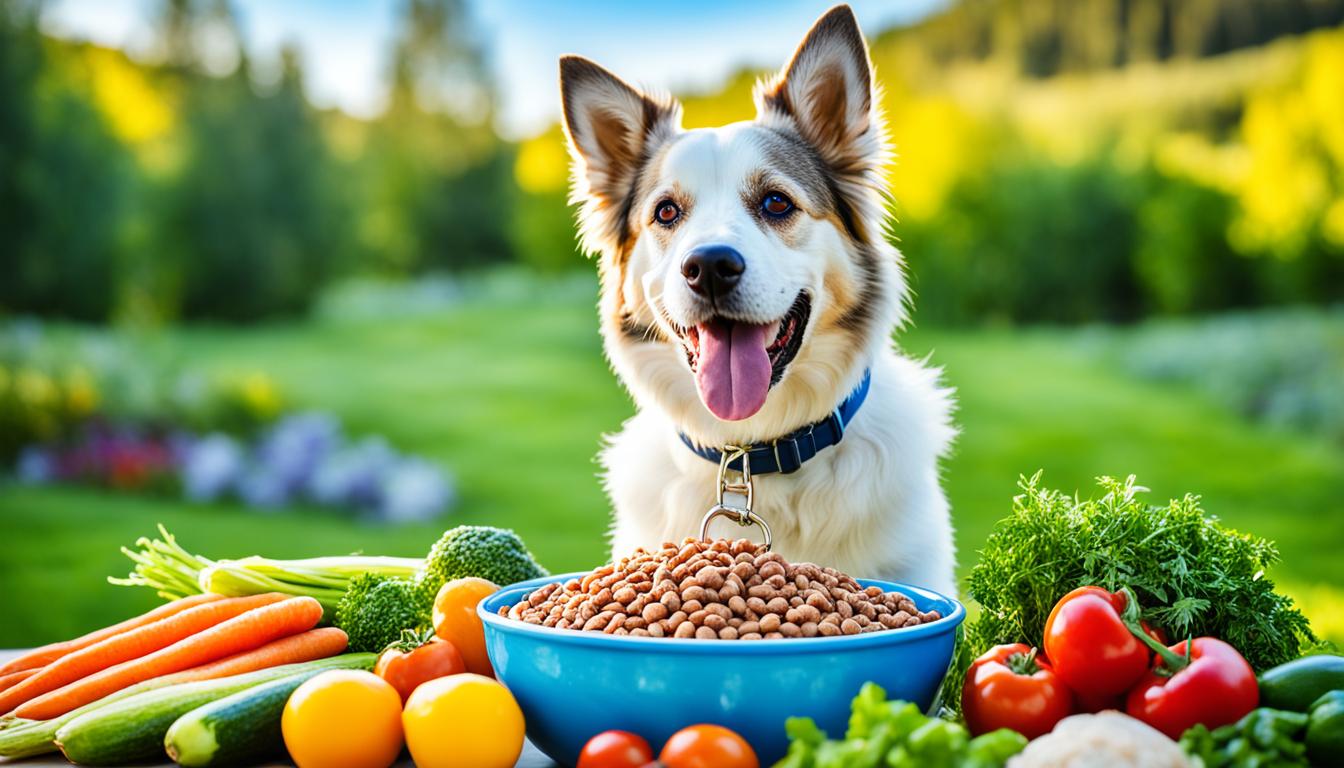
Did you know 17 studies on grain free diets in dogs have been published in the last 4 1/2 years? . Clearly we need to understand the effects of grain free pet food on our pets.
I’ve looked into grain free dog food for celiac disease and it’s complicated. Celiac disease is rare in dogs but some breeds like Irish Setters and Border Terriers may have issues with gluten. Many pet owners think gluten free is better for their pets.
Since 2005 grain free dog food has been on the rise. These diets are seen as better for dogs with health issues or allergies. But wheat gluten and barley are cheaper than animal protein so gluten free is hard to find and expensive
As I delve into this I’ll share what I’ve learned about grain free diets for dogs with celiac disease. Benefits, risks and debates. For pet owners to make better diet choices for their dogs.
Key Takeaways
- Celiac disease is rare in dogs but some breeds are more prone
- Grain free diets have been popular since 2005
- 17 recent studies have looked at grain free diets and health issues in pets
- Gluten free pet food is more expensive due to ingredients
- Consult with a vet before switching to a grain free diet
- Some grain free diets have been linked to dilated cardiomyopathy in dogs
- Read ingredient labels carefully when choosing pet food
Understanding Celiac Disease in Dogs
There has been a lot of hype about hypoallergenic dog treats and wheat free diets for dogs. This is all because of celiac disease in dogs. Let’s talk about this condition and how it affects our fur babies.
What is Celiac Disease?
Celiac disease in dogs is a rare genetic issue that harms the small intestine lining. It’s like gluten intolerance in people. While most dogs don’t have celiac disease, some may react badly to gluten.
Prevalence in Dogs
Celiac disease is not common in dogs. Irish Setters might be more likely to get it, but no other breeds are known to be at risk. Most dogs with grain issues are sensitive to them, not allergic.
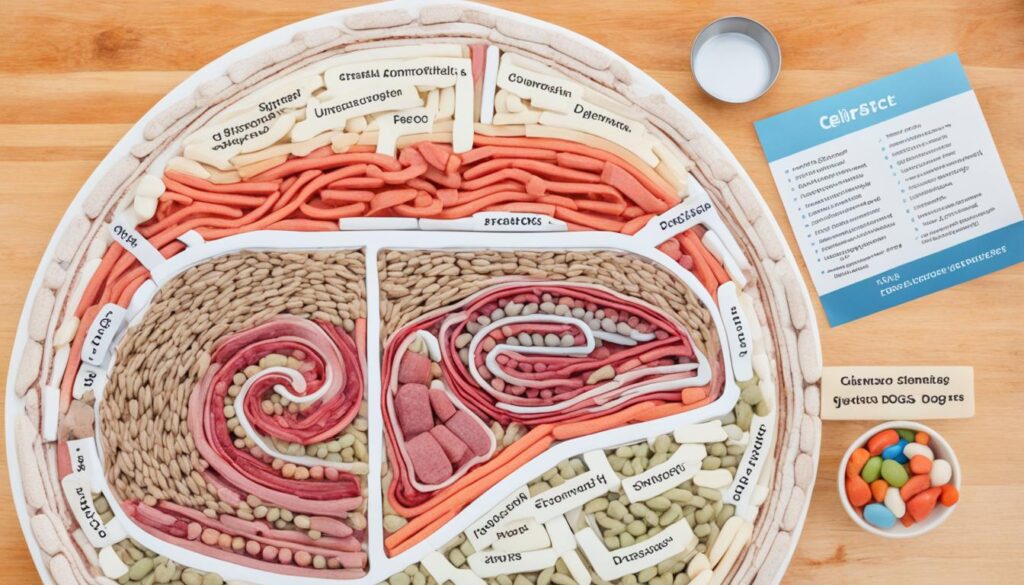
Symptoms and Diagnosis
Signs of gluten intolerance or celiac disease in dogs include:
- Chronic gastrointestinal upset
- Atopic dermatitis
- Weight loss
- Foot chewing
- Chronic ear infections
To figure out if a dog has these issues, vets use blood, saliva, urine, or fecal tests. An elimination diet can also help find out if a dog is sensitive to gluten. If your dog shows these signs, think about trying wheat-free diets or hypoallergenic treats.
| Test Type | Purpose | Effectiveness |
|---|---|---|
| Blood Test | Detect antibodies | High |
| Saliva Test | Measure enzyme levels | Moderate |
| Elimination Diet | Identify triggers | Very High |
The Rise of Grain-Free Dog Food
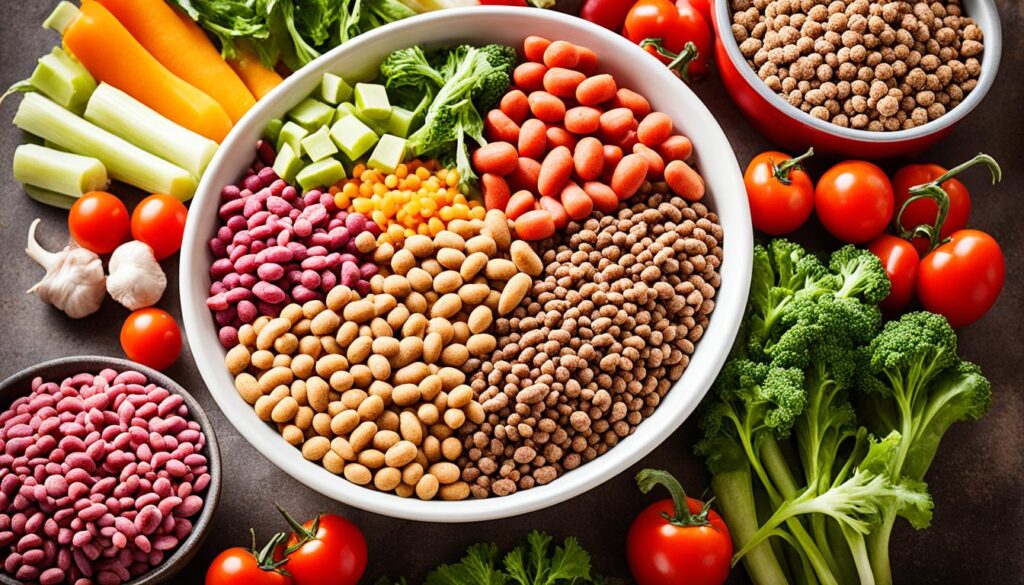
In the last 20 years, the pet food industry has seen big changes. Grain-free dog food is now more popular, with sales up by 5% last year. This matches the rise in non-GMO pet products and grain-alternative recipes.
About 20 years ago, vets looked for better food solutions for dogs with food allergies. Nutrition companies tested these new diets to make sure they were safe. By 2005, grain-free diets were seen as healthier for dogs with health problems.
Humans are choosing grain-free diets for their pets too. In fact, grain-free pet food sales could hit $53 billion in the next decade. Many brands now offer grain-free options, using potatoes, chickpeas, and lentils instead of grains.
Even though grain-free diets are popular, we need to be careful. The FDA has found cases of heart disease in dogs eating grain-free foods. As a pet owner, I talk to my vet before changing my dog’s diet. This ensures I’m making the best choice for their health.
What Exactly is Grain-Free Dog Food?
Grain-free dog food is becoming more popular as an option for pets with allergies. Over 40% of dry dog food in the US now has no grains. This shows how important digestive health for pets is becoming.
Common Ingredients in Grain-Free Diets
Instead of grains, grain-free dog foods use other ingredients. These include:
- Meat proteins (chicken, beef, fish)
- Legumes (peas, lentils)
- Root vegetables (sweet potatoes, regular potatoes)
- Other vegetables (carrots, spinach)
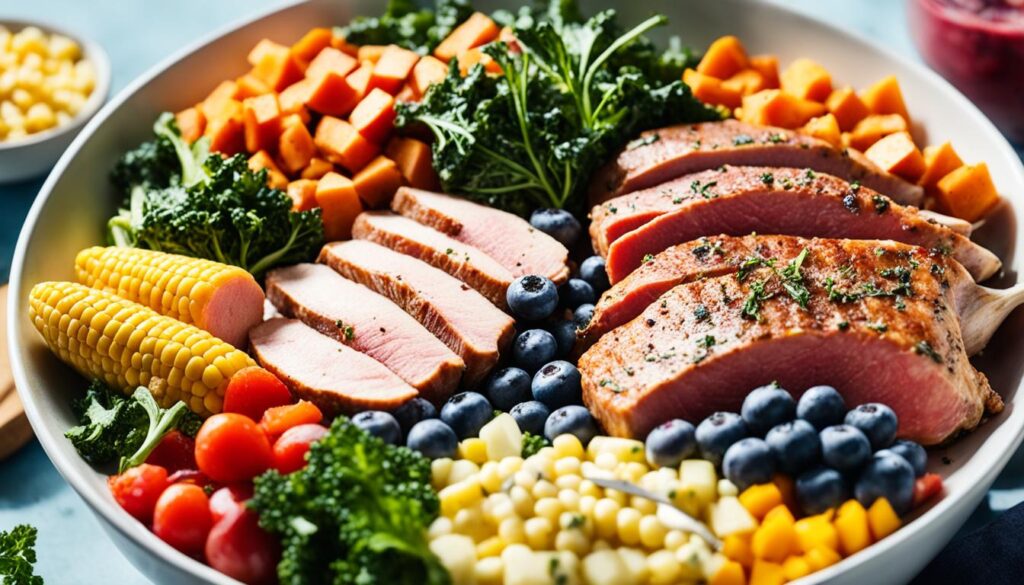
Nutritional Profile of Grain-Free Foods
Grain-free foods have more protein and fat than traditional dog food. But remember, grain-free doesn’t mean carb-free. These diets have carbs from other sources.
| Nutrient | Grain-Free | Traditional |
|---|---|---|
| Protein | Higher | Lower |
| Fat | Higher | Lower |
| Carbs | Present (from alternatives) | Present (from grains) |
Grain-free diets can help dogs with allergies. But, the FDA has found a link between these diets and heart problems in dogs.
Celiac Disease vs. Grain Sensitivities in Dogs
Celiac disease is rare in dogs, but grain sensitivities can happen. Many pet owners mix up these conditions. Only about 1 in 133 humans has celiac disease, but it’s much rarer in dogs. Less than 1% of dogs have grain sensitivities.
Grain-free diets are now more popular, leading to more gluten-free pet food choices. But, true grain allergies in dogs are not common. Most dog food allergies come from proteins, not grains.
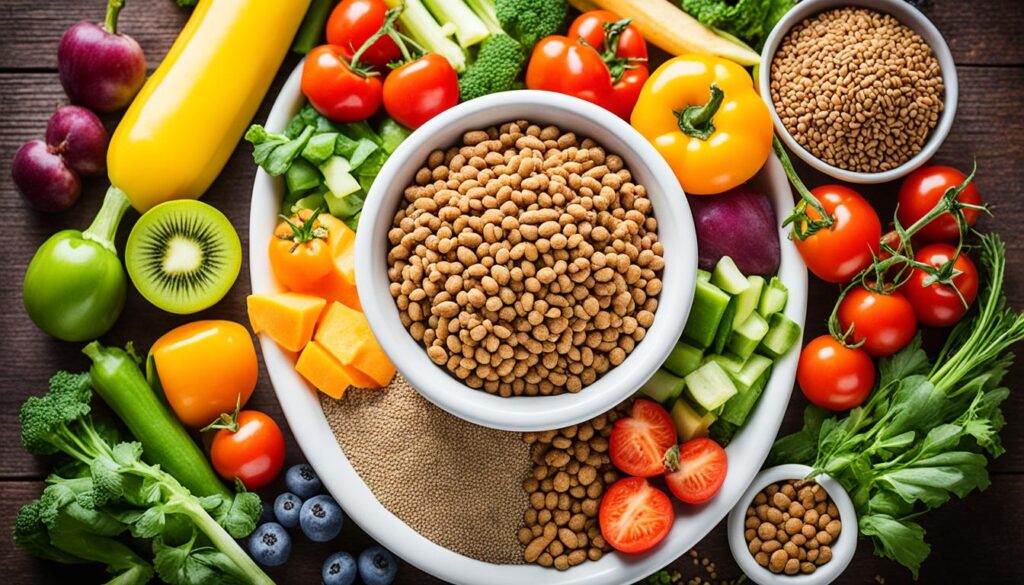
Celiac disease is an autoimmune reaction to gluten, while grain sensitivities have different causes and symptoms. For dogs with real grain allergies, a grain-free diet can help. But grains are important for dogs because they give them fiber, vitamins, and minerals.
The FDA started looking into grain-free dog foods in 2018 because of possible links to heart problems. This shows how important it is to talk to a vet before trying new diets. Always put your dog’s health first, and getting the right diagnosis is crucial.
Benefits of Grain-Free Diets for Dogs with Celiac Disease
A wheat-free diet can really change the health of dogs with celiac disease. Only a few dogs have true grain allergies, but those who do can see big benefits from a celiac-friendly diet.
Symptom Management
Grain-free diets help dogs with celiac disease a lot with their digestion. Over 70% of vet visits are for digestive or skin issues, which a good diet can fix. By removing wheat, which causes allergies in about 24% of dogs, symptoms often get much better.
Improved Nutrient Absorption
Dogs with celiac disease can have trouble getting nutrients. A grain-free diet can help with nutrient. This is key for staying healthy and avoiding nutritional problems.
Enhanced Overall Health
Going grain free can make your dog healthier. Owners see shinier coats, more energy and better weight control. But remember grain free diets can cause heart problems in some dogs so watch your pet closely.
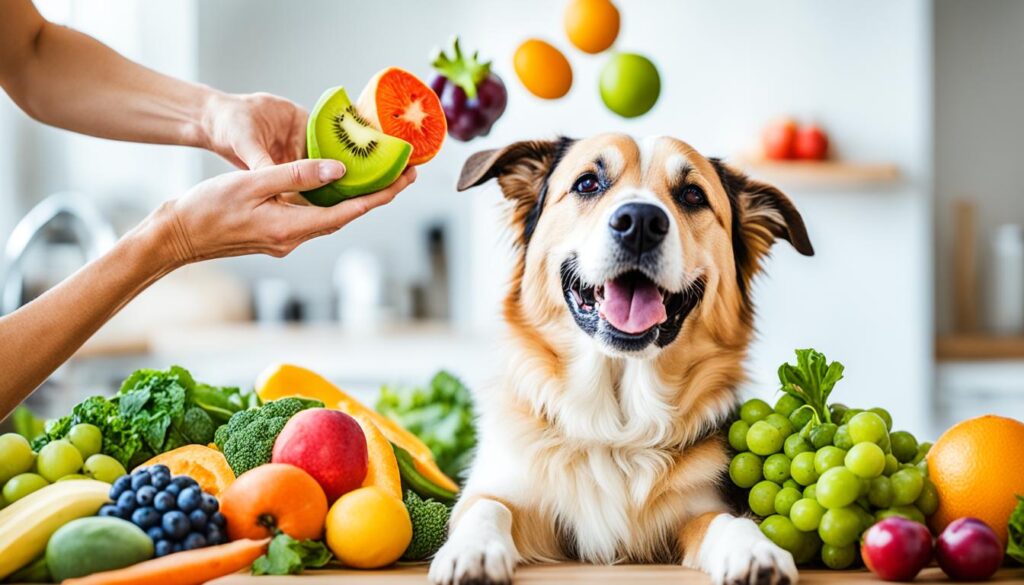
Not all dogs need a grain free diet even with celiac disease. Always talk to a vet before changing your pet’s diet to make sure it’s right for them.
Potential Risks and Controversies Surrounding Grain-Free Diets
I’ve been looking into grain free dog food for celiac issues and I found some scary facts. In 2018 the FDA started looking into a possible link between grain free diets and a heart condition in dogs. This condition is called dilated cardiomyopathy (DCM) and can cause heart failure.
The FDA found some scary numbers. From 2014 to 2019 they got 524 reports of DCM in pets, 515 of those were in dogs. Over 90% of those were in dogs eating grain free diets. Those diets often had peas, lentils, potatoes or sweet potatoes as main ingredients.
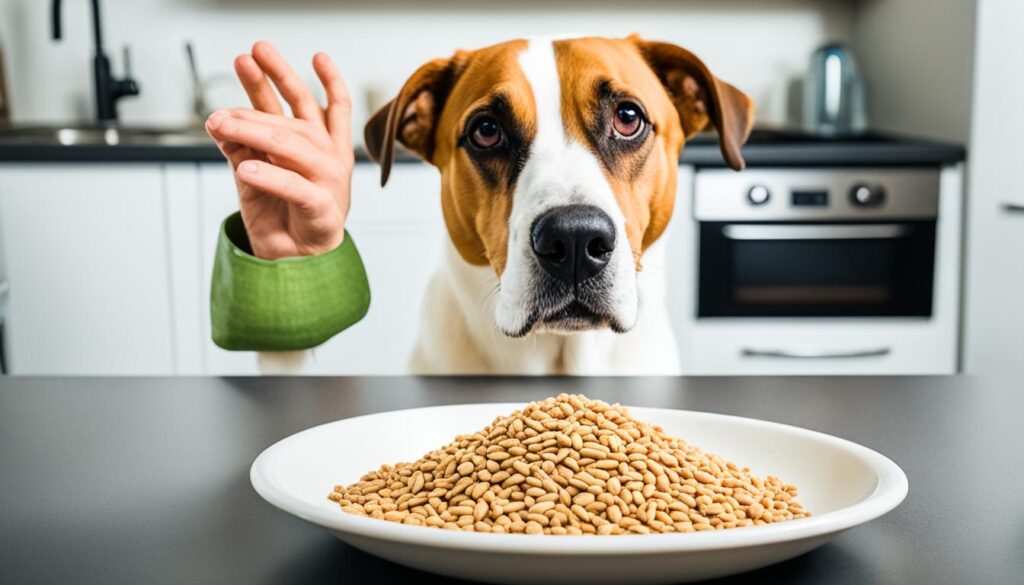
Some big name brands were involved in these cases even those that claim to be non-GMO pet food. The dogs affected were 6.6 years old and 67.8 pounds. But the connection is still unknown.
This has sparked a lot of debate about grain free diets for dogs without grain sensitivities. If you’re considering grain free dog food for your pet’s celiac issues talk to a vet first. They can help you understand the risks and benefits for your pet.
Grain-Free Dog Food Celiac: Choosing the Right Diet
Finding the right grain-free diet for dogs with celiac disease can be challenging. I’ll help you pick the best grain-alternative pet recipes for your pet’s digestive health.
Reading Labels and Ingredient Lists
When looking for grain-free dog food, it’s key to read labels closely. Make sure the food is not only grain-free but also gluten-free. Some grain-free foods might still have gluten from other sources. Here are some tips:
- Check for complete and balanced formulas that meet AAFCO guidelines
- Avoid foods with potatoes and peas as main ingredients to prevent weight gain
- Look for added taurine and carnitine for heart health
Consulting with a Veterinary Nutritionist
It’s smart to talk to a vet nutritionist before switching to a grain-free diet. They can create a diet plan that fits your dog’s specific needs. Grain allergies are not common in dogs, affecting less than 1% of them. Your vet can help pick the best grain-alternative pet recipes for your dog’s digestive health.
| Consideration | Importance |
|---|---|
| Complete and balanced nutrition | Essential for overall health |
| Grain-free and gluten-free | Crucial for dogs with celiac disease |
| Added taurine and carnitine | Supports heart health |
| Veterinary consultation | Ensures appropriate nutrition intake |
Alternative Diets for Dogs with Celiac Disease
Finding the right diet for a dog with celiac disease can be tough. Grain-free diets are popular, but there are other options to consider. Let’s look at some alternatives that might be good for your pet.
Limited ingredient diets are a good choice. They have fewer ingredients, making it easier to avoid potential allergens. Novel protein diets use proteins like venison or rabbit that your dog may not be allergic to.
Hydrolyzed protein diets are another option. These foods have proteins broken down into smaller pieces to lower the chance of an allergic reaction. Some vets suggest prescription hypoallergenic dog treats and foods. These are made in controlled settings to avoid contamination.
- Limited ingredient diets
- Novel protein diets
- Hydrolyzed protein diets
- Prescription hypoallergenic options
These diets cost more upfront but will save on vet bills by preventing health issues. Every dog is different. What works for one won’t work for another. Work with your vet to find the right diet for your dog.
Transitioning Your Dog to a Grain-Free Diet
Switching to a grain free diet for your pet requires planning. Do it slowly. Let’s get started.
Gradual Introduction
Start by adding a little grain free to your dog’s current diet. Increase the new food a little bit at a time over 7-10 days. This will prevent stomach upset and allow your dog to get used to the new food. Purina’s grain free foods which use cassava instead of grains are a good choice for transitional nutrition.
Monitoring for Adverse Reactions
Watch your dog closely as they adjust to the new diet. Look for changes in how much they eat, their poop, or how much energy they have. If you see any bad signs, talk to your vet right away. Grain allergies are rare in dogs, but some dogs do better without grains.
Grain-free diets might cost more, but they usually have more meat and better ingredients. Spending more on celiac-friendly pet food could mean better digestion and health for your dog. Always talk to your vet to make sure you’re choosing the best for your dog.
